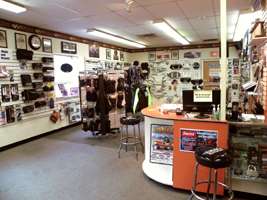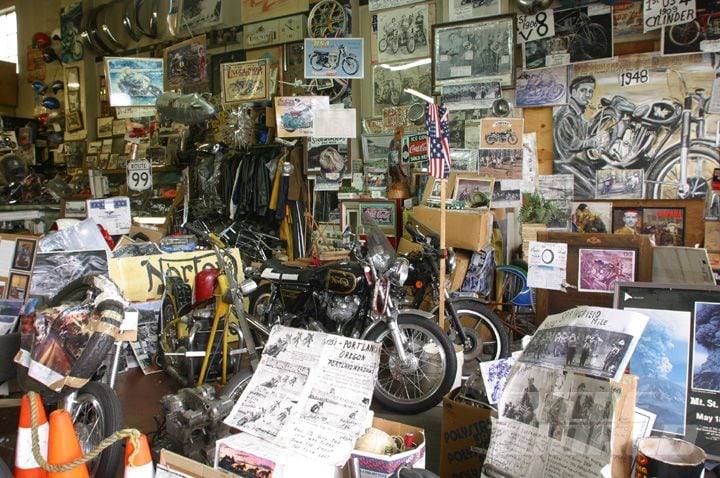Recognizing the Important Parts of a Bike: A Comprehensive Guide for Enthusiasts
For motorcycle lovers looking to raise their riding experience and guarantee their bikes run smoothly, recognizing the important parts of a motorbike is vital. Each element, from the engine's elaborate workings to the critical function of the stopping systems, not just impacts performance yet also safety and security and comfort.
Engine Elements

The camshaft plays a crucial function in regulating the timing of the engine's valves, ensuring the accurate opening and closing necessary for effective gas and air intake, as well as exhaust expulsion. This timing is essential to maintaining ideal engine efficiency and performance. Additionally, the carburetor or fuel injection system, depending on the motorcycle model, is in charge of blending air with gas in the appropriate ratio for combustion.
The cooling system, either air or liquid-based, functions to keep the engine's temperature within functional restrictions, preventing overheating and making sure longevity - motorcycle parts nz. Each part, meticulously made and incorporated, contributes to the smooth operation of the engine, defining the motorcycle's power outcome and general efficiency
Transmission System
Integral to the motorbike's performance, the transmission system makes sure effective power transfer from the engine to the wheels. This system comprises several vital elements, including the clutch, transmission, and last drive, each playing a vital role in translating the engine's power right into motion. The clutch, normally run by a hand bar, offers to engage and disengage the engine from the transmission, enabling smooth gear changes and controlled acceleration.
The gearbox, frequently referred to as the transmission correct, contains a set of equipments that cyclists can by hand shift with to change the bike's speed and torque outcome. These equipments are arranged in a series that allows the motorbike to speed up efficiently and keep ideal engine efficiency throughout various speeds. Most bikes use a consecutive transmission, calling for the motorcyclist to shift gears in a predetermined order.
Braking Systems
While understanding the transmission system is crucial to utilizing a bike's power, similarly important is the capacity to manage and quit that power effectively, which is where braking devices enter into play. Brakes are essential for safety and efficiency, giving the cyclist with the necessary control to browse different surfaces and problems. Normally, motorcycles include two sorts of braking systems: disc brakes and drum brakes.
Disc brakes are more widespread in modern-day bikes as a result of their remarkable performance. They include a brake disc, caliper, and pads. When triggered, the caliper squeezes the brake pads against the rotating disc, transforming kinetic power right into warmth, consequently slowing the wheel. This system provides far better warmth dissipation, regular performance, and improved stopping power, particularly in damp problems.
Alternatively, drum brakes, though less usual, are still discovered in some bikes. They work by pressing brake footwear against the internal surface of a drum affixed to the wheel. While usually less efficient in heat dissipation and stopping power, drum brakes are less complex and more affordable.
Understanding these stopping systems' nuances allows motorcyclists to maintain their bikes properly and value the engineering that guarantees secure and efficient stopping.
Suspension and Guiding
Suspension and guiding systems are vital components that dramatically influence a motorcycle's handling and ride comfort. The shock absorber, consisting of forks at the front and shock absorbers at the rear, absorbs road irregularities, enhancing security and control. Front forks, normally telescopic or upside down, compress and rebound to alleviate influences, while back shock absorbers preserve tire contact with the road, moped rain cover essential for traction and security.
Steering, focused around the handlebars, links the motorcyclist to the motorbike's directional control. The steering head bearings guarantee smooth procedure, enabling accurate maneuverability. Proper alignment and maintenance of these bearings are crucial for foreseeable steering feedback and reducing motorcyclist exhaustion.
The suspension's adjustability is an additional essential element; preload, damping, and rebound settings allow personalization to fit numerous riding conditions and styles. This flexibility is necessary for enhancing performance, whether navigating urban roads or dealing with sturdy trails. Advancements like electronic suspension systems use real-time modifications, boosting ride high quality throughout diverse surfaces.

Electric Systems
After making certain a smooth and regulated trip through reliable suspension and steering systems, interest transforms to the electrical systems, a pivotal element of modern-day motorbikes. These systems play an important role not only in beginning the engine but likewise in powering various elements that boost the functionality and security of the bike.
At the heart of a motorcycle's electric system is the battery, which shops electrical power essential for beginning the engine and powering auxiliary systems - moto parts nz. The alternator or generator, paired with the rectifier-regulator, guarantees the battery continues to be billed while the motorcycle functions, transforming mechanical power into electrical energy and keeping voltage levels
The ignition system, one more important part, is accountable for sparking the air-fuel combination in the engine's cyndrical tubes. Modern motorbikes frequently make use of an electronic ignition system, offering greater efficiency and integrity contrasted to typical systems.
Lights systems, consisting of headlights, tail lights, and indicators, are likewise crucial, making certain visibility and security for the cyclist. Additional electronic components such as sensing units, control units, and displays add to innovative attributes like gas injection management, anti-lock stopping systems (ABDOMINAL), and digital control panels, further aftermarket bike parts boosting the riding experience.
Conclusion
A complete understanding of a motorbike's crucial parts, consisting of the engine, transmission system, stopping mechanisms, suspension, steering, and electrical systems, is vital for enthusiasts aiming to optimize comfort, efficiency, and security. Proficiency of these aspects enables informed decisions concerning upkeep and upgrades, ultimately improving the riding experience. By incorporating this understanding, riders can ensure their motorbikes operate at peak performance and integrity, thereby making the most of both satisfaction and longevity of their vehicles.
For motorbike enthusiasts looking to raise their riding experience and guarantee their bikes run efficiently, comprehending the necessary parts of a bike is critical.Integral to the bike's capability, the transmission system guarantees reliable power transfer from the engine to the wheels.While comprehending the transmission system is key to using a bike's power, have a peek at this site equally essential is the ability to regulate and stop that power successfully, which is where stopping devices come into play. Typically, motorcycles include two types of braking systems: disc brakes and drum brakes.
A comprehensive comprehension of a motorcycle's necessary elements, consisting of the engine, transmission system, stopping systems, suspension, guiding, and electric systems, is indispensable for fanatics aiming to enhance convenience, efficiency, and safety.